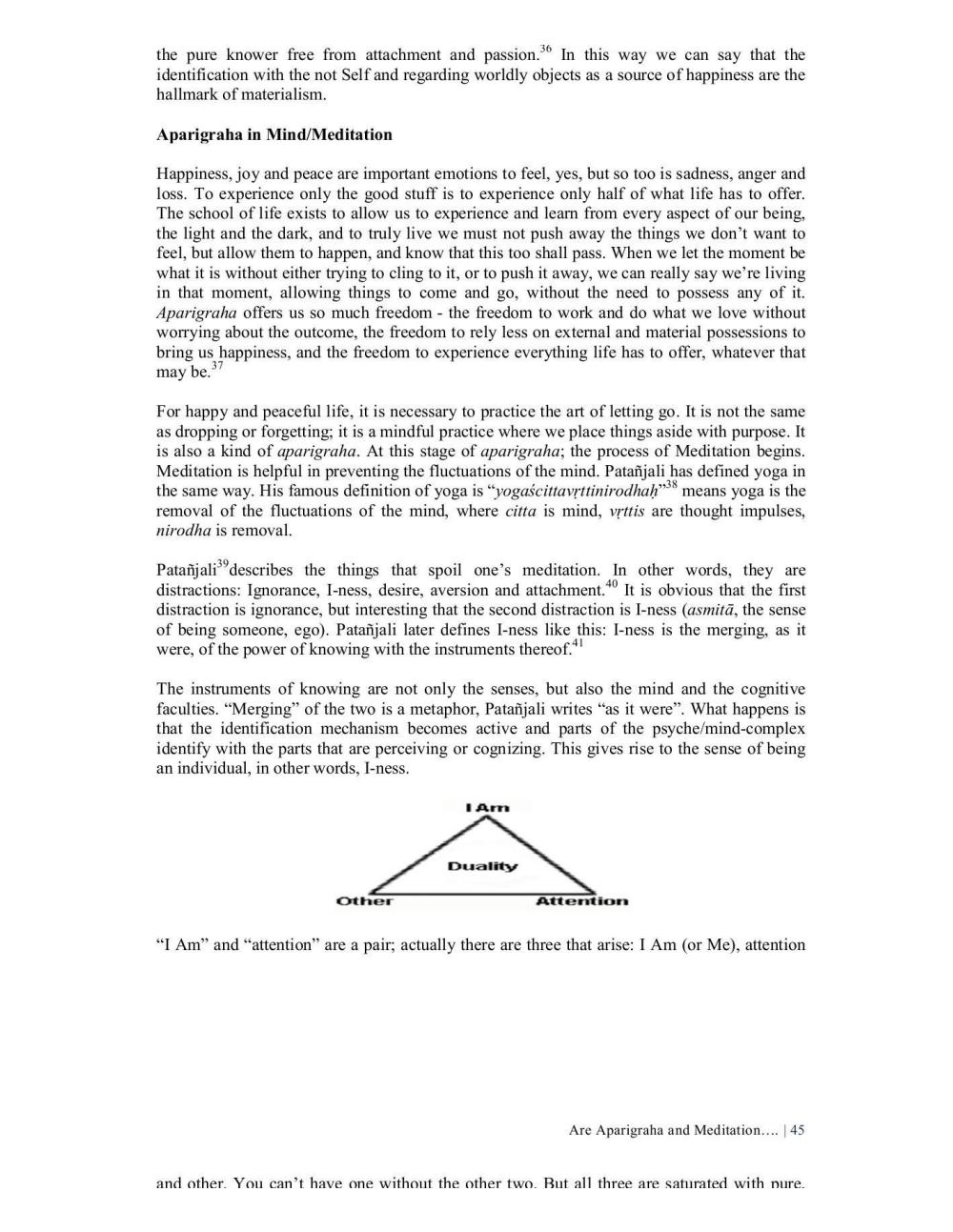________________
the pure knower free from attachment and passion. In this way we can say that the identification with the not Self and regarding worldly objects as a source of happiness are the hallmark of materialism.
Aparigraha in Mind/Meditation
Happiness, joy and peace are important emotions to feel, yes, but so too is sadness, anger and loss. To experience only the good stuff is to experience only half of what life has to offer. The school of life exists to allow us to experience and learn from every aspect of our being, the light and the dark, and to truly live we must not push away the things we don't want to feel, but allow them to happen, and know that this too shall pass. When we let the moment be what it is without either trying to cling to it, or to push it away, we can really say we're living in that moment, allowing things to come and go, without the need to possess any of it. Aparigraha offers us so much freedom - the freedom to work and do what we love without worrying about the outcome, the freedom to rely less on external and material possessions to bring us happiness, and the freedom to experience everything life has to offer, whatever that may be."
For happy and peaceful life, it is necessary to practice the art of letting go. It is not the same as dropping or forgetting; it is a mindful practice where we place things aside with purpose. It is also a kind of aparigraha. At this stage of aparigraha; the process of Meditation begins. Meditation is helpful in preventing the fluctuations of the mind. Patañjali has defined yoga in the same way. His famous definition of yoga is "yogaścittavrttinirodhah" means yoga is the removal of the fluctuations of the mind, where citta is mind, vrttis are thought impulses, nirodha is removal.
Patañjali"describes the things that spoil one's meditation. In other words, they are distractions: Ignorance, I-ness, desire, aversion and attachment." It is obvious that the first distraction is ignorance, but interesting that the second distraction is I-ness (asmitā, the sense of being someone, ego). Patañjali later defines I-ness like this: I-ness is the merging, as it were, of the power of knowing with the instruments thereof."
The instruments of knowing are not only the senses, but also the mind and the cognitive faculties. "Merging" of the two is a metaphor, Patañjali writes "as it were". What happens is that the identification mechanism becomes active and parts of the psyche/mind-complex identify with the parts that are perceiving or cognizing. This gives rise to the sense of being an individual, in other words, I-ness.
IA
Duality
Other
Attention
"I Am" and "attention" are a pair; actually there are three that arise: I Am (or Me), attention
Are Aparigraha and Meditation.... 45
and other. You can't have one without the other two. But all three are saturated with pure.




